|
|
Post by topbilled on Oct 26, 2022 17:46:32 GMT
Reviews for Eagle-Lion films will be placed here.

|
|
|
|
Post by topbilled on Dec 31, 2022 15:32:22 GMT
This neglected film is from 1947.
Classic do over

REPEAT PERFORMANCE is blessed with a good script and engaging performances. It typifies post-war output from Eagle-Lion, a fledgling studio that specialized in thought-provoking stories and employed some of the best British and Hollywood talent available.

Joan Leslie is cast in the lead role, on loan-out from home studio Warner Brothers. She gives a stellar performance as a Broadway star who’s married to an alcoholic writer (Louis Hayward). To say their marriage is in trouble is putting it mildly. Miss Leslie’s wholesomeness contrasts perfectly with Mr. Hayward, whose character is a scoundrel. She also does nicely with scene stealer Richard Basehart who appears as a sweet but unhinged friend.

The film uses a time loop. It starts with Leslie killing husband Hayward on New Year’s Eve. As the clock strikes twelve, she wanders on to the street in a daze. She wishes she could relive the past year and do things right. Magically, our heroine learns that her wish has been granted.
Instead of it being the first day of 1947, she has now gone back to January 1st, 1946. The best part of this gimmick is that it invests even the most casual viewer in the plot outcome. Already, at just five minutes into the film, we are committed to watching the whole thing to see if her nightmare will happen all over again, or if she manages to have a different ending.

As the previous year (re)plays, we learn how the marriage between Leslie and Hayward fell apart. We observe her relationship with other people in their immediate orbit. There’s a sensitive poet (Basehart) that has always been supportive, though his year is just as bad as theirs.
Also, there is a wealthy benefactress (Natalie Schafer); a kind-hearted producer (Tom Conway); and a home wrecker (Virginia Field). All of these people experience their own dilemmas, which compounds the problems that Leslie’s character is facing.

The film touches on how people behave in traumatic situations. Some of them want to escape the pain they are experiencing in the present and retreat to another “reality” that is safer. But can a person redirect their own fate? Is anyone ever truly in control of how things turn out?

It’s a self-reflexive sort of film. Joan Leslie is an actress, and she is playing an actress who plays an actress in a new stage play. So it goes beyond actress as actress; she’s actress as actress as actress. Miss Leslie is entirely believable, and the rest of the cast are perfectly in-sync with the material and what’s required of them.

Richard Basehart gives a strangely endearing performance. There’s a scene where he receives a visit while staying in a mental institution. He manages to convey insanity and supreme intelligence at the same time.
At one point Leslie’s character thinks Basehart is smarter and certainly more sane than her. She says they should be on opposite sides of the table in the visiting room, suggesting she belongs in there...that he’s more capable of functioning on the outside. It’s as if she is speaking to a part of herself.

The ending of the film returns us to the beginning. The husband does get shot again, and once again, he dies. But the poet, who just escaped from the looney bin, turns out to be the culprit this time. As he’s hauled away by the police, he tells claims that he couldn’t stop fate, but he could change who’s responsible.
The movie seems to end on a happy note. But who’s to say the leading lady won’t kill her next husband and need to relive another year of her life? There’s no sequel, so we don’t get a repeat performance of that.

|
|
|
|
Post by Fading Fast on Dec 31, 2022 15:54:04 GMT
That's an outstanding review of another excellent and intelligent British post-war movie.
For those who are interested, we will be watching "Repeat Performance" on "Sunday Live" at 3pm ET if you wish to join us. We've had a lot of fun watching and commenting on movies "together."
It's a nice group that is very welcoming to newcomers.
|
|
|
|
Post by sagebrush on Jan 1, 2023 15:34:36 GMT
This neglected film is from 1947.
Classic do over

I enjoyed this film more than I expected to. I always enjoy Joan Leslie, but also really like Louis Hayward and feel he often gets overlooked today. On paper, the plot sounds confusing, but it plays out much more smoothly on film.
|
|
|
|
Post by topbilled on Jan 1, 2023 15:38:49 GMT
I agree sagebrush...the plot for REPEAT PERFORMANCE seems contrived, but somehow it works like a charm!
|
|
|
|
Post by topbilled on Jan 17, 2023 15:45:22 GMT
This neglected film is from 1948.
Jim Sherbondy in Canon City
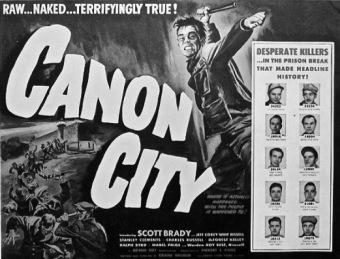
A wave of semi-documentary crime films hit the screen after the war. Twentieth Century Fox did quite well with this type of storytelling, a combination of gritty noir and fact-based drama. Eagle-Lion also excelled at producing these stories. The studio had succeeded with pictures like HE WALKED BY NIGHT, T-MEN and TRAPPED. But perhaps the best of these was CANON CITY, filmed in Colorado.

I should point out that CANON CITY is not pronounced Cannon City. There is supposed to be a tilde over the ‘N’ and it is pronounced Canyon City.
A prison was opened in Canon City, Colorado back in 1871 when Colorado was still a territory. Five years later, in 1876, when Colorado became a state, the territorial prison became a state prison. For years it housed dangerous criminals, many facing execution. An execution chamber was located on site until the 1990s. Today, the prison is still in operation almost 150 years after it first opened. But less dangerous inmates reside there now, and it has become a medium-security facility. The deputy warden’s house has never been rebuilt and still looks like something out of the 1800s.

For a century and a half the prison has provided continuous employment for residents that live in the surrounding community. There have been a few occasions when residents of Canon City have faced danger due to events at the facility. In 1929 there was a riot, and in late 1947 there was a prison break. Eagle-Lion’s motion picture is a recreation of the prison break.

Since director Crane Wilbur is utilizing a semi-documentary style, the film begins with a newsreel type tour of the prison as well as a short interview with Warden Roy Best. After the preliminary information is out of the way, we meet Carl Schwartzmiller (Jeff Corey), a lifelong hood and twelve other inmates who will escape with him. One of these men is a very reluctant guy named Jim Sherbondy (Scott Brady). Jim has been inside for almost ten years. He has petitioned the governor for release and thinks Warden Best will recommend him for parole.
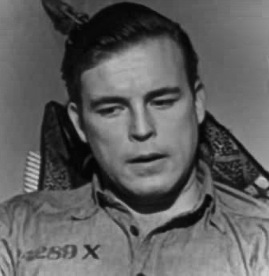
Jim’s become one of the warden’s most trusted inmates, and as a result, he has privileges the other men do not enjoy. For instance, he is allowed to run the darkroom, developing x-rays that are used by doctors in the infirmary. Carl and the other guys want Jim to join their group, because they can hide weapons in the darkroom. It’s an ideal place. Since there is no lock on the door, guards must knock before entering in case Jim’s in the middle of developing film. This provides extra time to dispose of weapons if officials catch on to a planned escape.
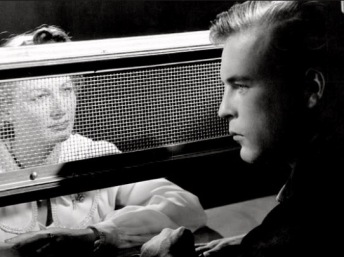
During a visit with his girl, Jim mentions the pressure the others have been putting on him. Of course she does not wish for him to get out under these circumstances. But when Jim learns that his petition for parole has been denied, he becomes angry. He is now receptive to Carl’s plans. Soon Jim helps Carl and the others escape, and he goes with them. This occurs on the 30th of December 1947. There are some very good exterior sequences filmed on location with the men taking off in a blizzard. They separate and a few of the men find their way to farms outside Canon City.
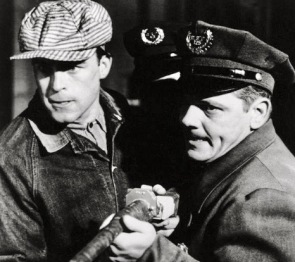
Much of the action is routine for prison break pictures of the era. But since this one is based on a recent real-life event and has the full cooperation of Warden Best and others who work at the Canon City facility, the filmmakers adhere more closely to the facts. There is fear among members of the local community that some escapees, particularly Jim, will enact revenge on the ones who had incarcerated them. It is a situation of high alert that is fraught with suspense and uncertainty. In the sequences that follow, some of the men are either killed or rounded up.
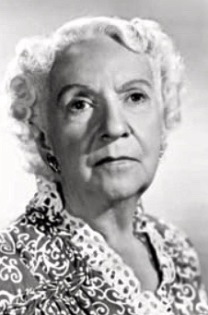
We also see what is going on with the farm families that are taken hostage and forced to accommodate the men. One particularly good segment involves Mrs. Edith Oliver (Mabel Paige). She’s a feisty old gal who seems sweet on the outside but is determined to outfox the interlopers under her roof. She attacks Carl with a frying pan AND breaks a chair over his head. What strength! She gets a special scene at the end of the movie, where her bravery is commended.

Soon all the men except one have been caught. And that man, of course, is Jim Sherbondy. The family that Jim has taken hostage has a seven year old boy whose appendix bursts. Despite his reputation as a violent man, Jim softens and lets the family get medical help, which of course leads to his surrender. Jim is brought to justice and his brief adventure as a fugitive is over.
He is returned to the facility in Canon City where he will continue to serve out the rest of his term. Jim Sherbondy would remain in the Colorado penal system until 1969. At that point he had been working in a prison labor camp, when he escaped again. Police officers shot and killed him on a street in Denver. Here is his original mug shot, taken in 1937.
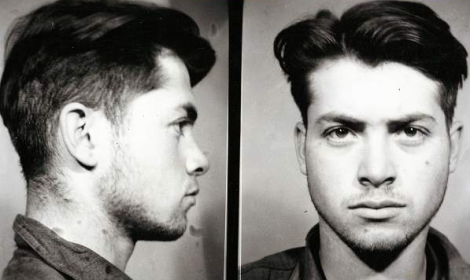
|
|
|
|
Post by topbilled on Jan 26, 2023 5:13:14 GMT
This neglected film is from 1948.
Stylish soap about a meteoric rise and fall

Perhaps Eagle-Lion’s most ambitious project is this thought-provoking drama directed by Edgar G. Ulmer. It features an enormously talented cast and production values to rival the output of any major studio. This is a high class affair from the word ‘go.’
Most of the performers that appear in RUTHLESS have been loaned out to E-L. From Warners, we have Zachary Scott, Martha Vickers and Sydney Greenstreet; from Paramount, there’s Diana Lynn; and Lucille Bremer has been borrowed from MGM. Freelance actors Louis Hayward and Raymond Burr are also included.

Zachary Scott portrays a backstabbing scoundrel who amasses a fortune at the expense and dignity of others. In the beginning, he’s a young boy from an impoverished background. His father (Burr) doesn’t want him and his mother can’t afford to keep him, so he’s adopted by a middle class family.
His new family sends him to a good college, where he studies business and sets his sights on wealthier people that he intends to emulate. He is mentored by a top business executive and learns how to get ahead through these connections, even if it means destroying the people who help him and taking what they have.

Scott has a pal played by Hayward, that he met at college. They are both interested in same girl (Lynn), only Scott ends up using her and then discarding her. Lynn’s fate is left unresolved. But she pops up again in the story, as a woman with a different name dating Hayward.

It’s never really said if she’s a different woman, or if she’s the same woman with a new personality. The main point is she ends up with Hayward, and this causes pain and regret for Scott. After his first love fell by the wayside, he had moved on and set his sights on a tycoon (Greenstreet) with a luscious wife (Bremer).

Greenstreet and Bremer are obscenely wealthy and make the mistake of taking Scott under their wing. He intends to steal Greenstreet’s business and does this by pretending to be the old man’s friend while sleeping with Bremer. He convinces her to get a divorce and marry him, thus giving him her shares of the company. These shares, combined with shares that Scott already owns, means the company will become his.

After he buys Greenstreet out, he plots his next power grab. Not surprisingly, the marriage to trophy wife Bremer, which was merely a means to an end, doesn’t last.
RUTHLESS is a litany of everything Scott’s character does to reach the top. Once he does reach the top, he’s lonely and miserable up there.

The film starts and ends with a lavish party at Scott’s estate. He is acting like a great philanthropist, throwing money at charities…which is nothing more than attention seeking on his part. He really does want to see his pal again, to talk about old times. But when he sees the woman on Hayward’s arm, who reminds him of his lost love, he decides he must have her. However, this time he is not going to get everything, and during a climactic scene along a pier, things turn violent.
Ulmer’s film is absorbing and stylish. It’s a meditation on the vulgar excesses of one man, not too different from CITIZEN KANE. Like the protagonist of that earlier film, Scott’s character is a little boy inside that just wants to be loved. But he has alienated everyone that ever cared about him. They might have been able to applaud his audacity, but they could never applaud him as a man who kept anything of real value.

|
|
|
|
Post by topbilled on Feb 3, 2023 15:27:27 GMT
This neglected film is from 1948.
Live and love

Occasionally Eagle-Lion produced comedies, and some of them had top stars. LET'S LIVE A LITTLE was intended for United Artists, but the deal fell through so Robert Cummings and producer Eugene Frenke brought the project to E-L. The studio agreed to finance it with a substantial budget. Frenke's wife Anna Sten was cast in one of the main roles; though the lead would be given to Hedy Lamarr.
It's interesting to see Cummings do comedy with two very different European actresses. Lamarr plays her role sympathetically, while Sten injects more screwball elements as a self-absorbed vamp. Sten had a gift for comedy, and she nearly walks away with the picture.
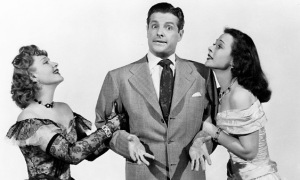
Cummings portrays a harried ad exec who is about to have a nervous breakdown. His boss is putting pressure on him to sign Miss Sten to a contract. She runs a perfume business, and the agency wants to handle the ads for her wildly successful fragrance. The backstory is that they were previously engaged. Sten will only sign the deal if Cummings agrees to propose again and make her his wife.
At the same time, Lamarr turns up as a well-known psychiatrist who has just written a new book. The agency is also trying to get her account, to advertise her book.
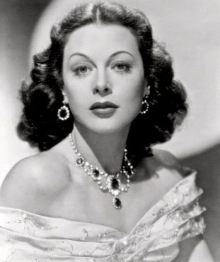
Cummings is so befuddled when he goes to visit Lamarr, that she assumes he must be a new patient. Later that evening, when he wines and dines Sten, he bumps into Lamarr who is also out having dinner. Things go wrong when Sten decides she's not getting enough attention. She causes a ruckus, and this sets off a domino effect that involves several people at the restaurant. Cummings really starts to crack up, and his comic breakdown is quite funny.
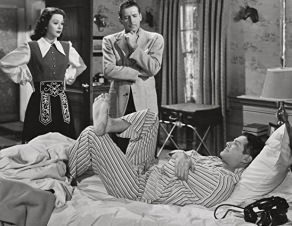
As a result of his mental collapse, he is taken to a resort in the country by Lamarr and another doctor. He's not supposed to use the phone. He's supposed to forget all about business and concentrate on getting well. Of course, he doesn't exactly follow orders.
This is when things really get interesting. Cummings realizes he has feelings for Lamarr, not Sten. When he leans in for a kiss, his impulsive behavior catches her off guard. She tells him he's cured and that he needs to go back to the city.
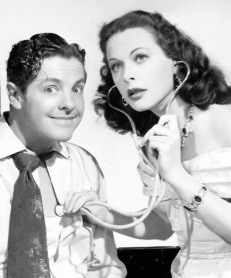
When Cummings returns to the city, he goes to see Sten but doesn't tell her he's in love with someone else. She signs the contract but keeps it in her possession and says he will have it the minute they are married. He calls her all sorts of names in frustration, and she throws facial cream at him. He retaliates by throwing cream at her. The slapstick in this scene is great, especially Sten's wailing when she realizes he's ruined her makeup and clothes.
Meanwhile, Lamarr has also returned to the city, and she is doing a radio show. She describes a recent patient while she's on the air. We know who she's talking about. At this point, it's clear that Lamarr has developed feelings for Cummings.
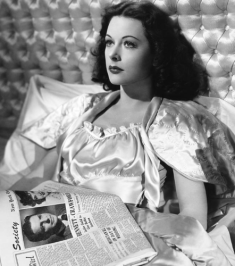
She sees a newspaper headline that he agreed to marry Sten after all. Say what?! Now it's Lamarr's turn to crack up. She needs Cummings in her life, and she can't let him marry Sten. But what is she going to do about it? Will she tell him how she feels before it's too late? Or will she remain uptight. Her life would be so much happier, if she could only relax and live a little.
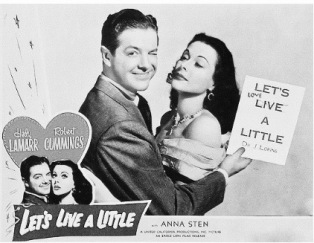
|
|
|
|
Post by topbilled on Feb 9, 2023 14:32:55 GMT
This neglected film is from 1948.
Phony medium with vulnerabilities

First known as THE SPIRITUALIST, this film was renamed THE AMAZING MR. X when the producers reissued it. The story seems like it would be fairly routine– a grieving widow (Lynn Bari) thinks she hears the voice of her late husband along the beach one night. Fearing she might be losing her mind, she tells her sister (Cathy O’Donnell).
The sister believes it is because she’s conflicted about an upcoming marriage to another man. But the voice continues to call out to Bari, and this causes her to seek the guidance of a spiritualist. The title character considers himself a psychic counselor, and many wealthy widows go to him.

He is played with flair by Austrian actor Turhan Bey. Just a few years earlier, Bey had been named one of Hollywood’s most promising newcomers. Universal used him a series of escapist films with Maria Montez, but by this point of his career he was taking on roles with Eagle-Lion in the hopes of demonstrating his versatility as a performer. And what we have here is a carefully modulated performance that stops short of scenery chewing, where he essays a phony medium with vulnerabilities.

When Bari visits him to contact the spirit of her dead husband, she is not only at risk of being used by Bey, but since he is being manipulated by a blackmailer who has evidence of his tricks to defraud people– they’re both in considerable danger. While the convoluted aspects of the story play out, we are drawn into how representations of good and evil are depicted with carefully composed visuals.
It is quite clear that cinematographer John Alton has his own tricks when it comes to photographing scenes that convey the eerie qualities of a corrupted spirit world. The use of lighting to indicate the trance-like state of Bari’s existence makes it seem as if the whole thing is taking place inside a dream. Or perhaps more accurately, inside a nightmare.

Lynn Bari was not the producers’ first choice for the role of the long-suffering heroine. Originally, they had signed Carole Landis to play the part. But unfortunately, Miss Landis committed suicide, so freelancer Bari stepped in. Landis might have been better in this film, given a chance to exorcise her own personal demons; though Bari brings it some sophistication and post-war fatigue that seems most appropriate.

As for Turhan Bey, his Hollywood career would come to a standstill five years later when a scandal abruptly forced him to leave the country. He went back to Europe, but returned to American screens a few decades later for several final acting roles. When we look at this particular film, we see skilled acting; outstanding visuals; and a story that has a point to make about a conniver trying to go legit. We don’t need a crystal ball to tell us we’re going to be mesmerized the minute we start watching.

|
|
|
|
Post by sagebrush on Feb 10, 2023 0:01:36 GMT
This neglected film is from 1948.
Phony medium with vulnerabilities

First known as THE SPIRITUALIST, this film was renamed THE AMAZING MR. X when the producers reissued it. The story seems like it would be fairly routine– a grieving widow (Lynn Bari) thinks she hears the voice of her late husband along the beach one night. Fearing she might be losing her mind, she tells her sister (Cathy O’Donnell).
The sister believes it is because she’s conflicted about an upcoming marriage to another man. But the voice continues to call out to Bari, and this causes her to seek the guidance of a spiritualist. The title character considers himself a psychic counselor, and many wealthy widows go to him.

He is played with flair by Austrian actor Turhan Bey. Just a few years earlier, Bey had been named one of Hollywood’s most promising newcomers. Universal used him a series of escapist films with Maria Montez, but by this point of his career he was taking on roles with Eagle-Lion in the hopes of demonstrating his versatility as a performer. And what we have here is a carefully modulated performance that stops short of scenery chewing, where he essays a phony medium with vulnerabilities.
I saw Turhan Bey for the first time (that I can think of) when TCM aired OUT OF THE BLUE a few months ago. I enjoyed his performance, although it was Ann Dvorak's wonderfully comedic performance as a drunk that stole the show.
|
|
|
|
Post by jamesjazzguitar on Feb 10, 2023 0:54:25 GMT
Ann Dvorak typically steals the show, even when her part is very secondary. |
|
|
|
Post by topbilled on Feb 10, 2023 1:13:57 GMT
This neglected film is from 1948.
Phony medium with vulnerabilities

First known as THE SPIRITUALIST, this film was renamed THE AMAZING MR. X when the producers reissued it. The story seems like it would be fairly routine– a grieving widow (Lynn Bari) thinks she hears the voice of her late husband along the beach one night. Fearing she might be losing her mind, she tells her sister (Cathy O’Donnell).
The sister believes it is because she’s conflicted about an upcoming marriage to another man. But the voice continues to call out to Bari, and this causes her to seek the guidance of a spiritualist. The title character considers himself a psychic counselor, and many wealthy widows go to him.

He is played with flair by Austrian actor Turhan Bey. Just a few years earlier, Bey had been named one of Hollywood’s most promising newcomers. Universal used him a series of escapist films with Maria Montez, but by this point of his career he was taking on roles with Eagle-Lion in the hopes of demonstrating his versatility as a performer. And what we have here is a carefully modulated performance that stops short of scenery chewing, where he essays a phony medium with vulnerabilities.
I saw Turhan Bey for the first time (that I can think of) when TCM aired OUT OF THE BLUE a few months ago. I enjoyed his performance, although it was Ann Dvorak's wonderfully comedic performance as a drunk that stole the show. |
|
|
|
Post by topbilled on Feb 10, 2023 1:15:12 GMT
Ann Dvorak typically steals the show, even when her part is very secondary. |
|
|
|
Post by topbilled on Jun 7, 2023 15:25:24 GMT
This neglected film is from 1948.
A specific time and place immediately after the war

This was the last film that MGM star Lucille Bremer made. Despite making a favorable impression in MEET ME IN ST. LOUIS, she wasn’t able to register with audiences opposite Fred Astaire in YOLANDA AND THE THIEF. Metro producers lost faith in her ability as a lead player in musicals, so after appearing in another segment with Astaire, this time in ZIEGFELD FOLLIES, she was demoted to “B” fare. There was a role in the last Dr. Gillespie picture in which she also failed to connect with audiences.

In order to finish out the remaining pictures on her contract, MGM loaned her to the British-American company Eagle-Lion. At Eagle-Lion Miss Bremer would wrap up her Hollywood career in 1948. She was in three E-L releases that year– the psychological thriller BEHIND LOCKED DOORS was the last one, and a fairly decent one to end on.
Interestingly, the movie hit theaters in September, a month after Bremer married the son of a former president of Mexico. She was probably not too interested in how BEHIND LOCKED DOORS did at the box office, since she was reinventing herself as a wife in political circles. Though she maintained lifelong connections with friends she made at MGM, she never looked back on the movies.

Bremer gets top billing in her motion picture swan song, but in most respects, it is costar Richard Carlson’s film. Carlson plays a private detective propositioned by Bremer, who works as a reporter, to get inside a private sanitarium. The amusingly named La Siesta is a place where a crooked judge, wanted by the law, is supposedly hiding out. If they pose as a married couple, with Carlson pretending to be a manic depressive, Bremer can have him evaluated and committed. Then he can find out if the judge is actually at La Siesta.
Some of the dialogue is insightful. We are told that private sanitariums are pretty crowded at this time in the U.S., most likely because WWII vets need ongoing psychiatric care. We are also told that there are abuses within the mental hygiene industry, and this film depicts several startling scenes where that is shown on screen. For as Carlson soon learns after he’s institutionalized, there are levels of corruption inside and many of the men are not receiving adequate treatment.

Carlson does his detecting and snooping while inside, and most of these moments are engaging and filled with tension. It is not really too suspenseful, until the end. Instead, the middle section of the film is more a series of character studies, with Carlson interacting with various patients and seeing how they function and cope within their shared surroundings.

Upstairs in a locked ward, there are two residents. One is the judge (Herbert Heyes) who is resting comfortably in a ‘private suite’ and receiving visits from his crooked girlfriend (Gwen Donovan). The other person upstairs is a deranged ex-pug (Tor Johnson) called The Champ, who thinks he is still inside the ring. Anytime he hears a bell or a sound that vaguely resembles a bell, he goes into fight mode. Later, when Carlson’s cover is blown, he is thrown into a padded cell with Johnson who gives him a memorable thrashing.

It has been said that Budd Boetticher’s BEHIND LOCKED DOORS inspired Sam Fuller’s later film, SHOCK CORRIDOR (1963), which has a similar theme. I wouldn’t doubt it. But Fuller often focused on the lurid aspects of crime, and I don’t think Boetticher’s film is all that lurid. Yes, the plot is a bit sensational, and there are a few shocking moments, but I think this is really a contemplative examination of a specific time and place immediately after the war.

|
|
|
|
Post by Fading Fast on Jun 15, 2023 11:52:28 GMT
This neglected film is from 1947.
Classic do over

REPEAT PERFORMANCE is blessed with a good script and engaging performances. It typifies post-war output from Eagle-Lion, a fledgling studio that specialized in thought-provoking stories and employed some of the best British and Hollywood talent available.

Joan Leslie is cast in the lead role, on loan-out from home studio Warner Brothers. She gives a stellar performance as a Broadway star who’s married to an alcoholic writer (Louis Hayward). To say their marriage is in trouble is putting it mildly. Miss Leslie’s wholesomeness contrasts perfectly with Mr. Hayward, whose character is a scoundrel. She also does nicely with scene stealer Richard Basehart who appears as a sweet but unhinged friend.

The film uses a time loop. It starts with Leslie killing husband Hayward on New Year’s Eve. As the clock strikes twelve, she wanders on to the street in a daze. She wishes she could relive the past year and do things right. Magically, our heroine learns that her wish has been granted.
Instead of it being the first day of 1947, she has now gone back to January 1st, 1946. The best part of this gimmick is that it invests even the most casual viewer in the plot outcome. Already, at just five minutes into the film, we are committed to watching the whole thing to see if her nightmare will happen all over again, or if she manages to have a different ending.

As the previous year (re)plays, we learn how the marriage between Leslie and Hayward fell apart. We observe her relationship with other people in their immediate orbit. There’s a sensitive poet (Basehart) that has always been supportive, though his year is just as bad as theirs.
Also, there is a wealthy benefactress (Natalie Schafer); a kind-hearted producer (Tom Conway); and a home wrecker (Virginia Field). All of these people experience their own dilemmas, which compounds the problems that Leslie’s character is facing.

The film touches on how people behave in traumatic situations. Some of them want to escape the pain they are experiencing in the present and retreat to another “reality” that is safer. But can a person redirect their own fate? Is anyone ever truly in control of how things turn out?

It’s a self-reflexive sort of film. Joan Leslie is an actress, and she is playing an actress who plays an actress in a new stage play. So it goes beyond actress as actress; she’s actress as actress as actress. Miss Leslie is entirely believable, and the rest of the cast are perfectly in-sync with the material and what’s required of them.

Richard Basehart gives a strangely endearing performance. There’s a scene where he receives a visit while staying in a mental institution. He manages to convey insanity and supreme intelligence at the same time.
At one point Leslie’s character thinks Basehart is smarter and certainly more sane than her. She says they should be on opposite sides of the table in the visiting room, suggesting she belongs in there...that he’s more capable of functioning on the outside. It’s as if she is speaking to a part of herself.

The ending of the film returns us to the beginning. The husband does get shot again, and once again, he dies. But the poet, who just escaped from the looney bin, turns out to be the culprit this time. As he’s hauled away by the police, he tells claims that he couldn’t stop fate, but he could change who’s responsible.
The movie seems to end on a happy note. But who’s to say the leading lady won’t kill her next husband and need to relive another year of her life? There’s no sequel, so we don’t get a repeat performance of that.
 |
|